MARBLE SLABS AND TILES FLOORING BY BHANDARI MARBLE GROUP
Why BHANDARI MARBLE GROUP’S Italian Marble Is the Finest Marble in The World. While marble is quarried in many countries around the world including Greece, USA, India, Spain, Romania, China, Sweden, and even Germany, there is one country which is generally considered the home of the most high-grade and luxurious marble available.
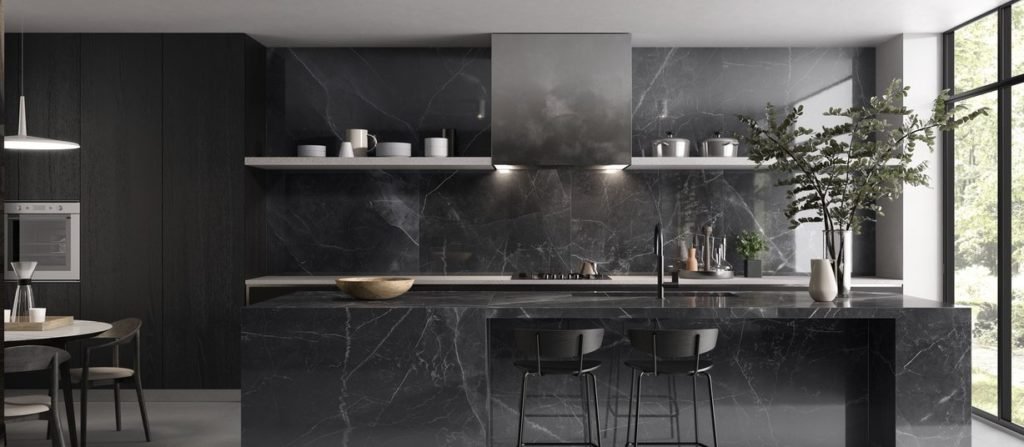
The Most Popular
Because marble is able to withstand extreme heat, it has come into its own as the lowest maintenance, highest beauty option for a kitchen countertop. One of the best things about marble is that it can take bold colors in the room.
Statuario marble is considered as the most luxurious marble type due to its rarity. Calacatta stone is very often mistaken for Carrara marble due to the striking similarities in color and veining.

Marble slabs and tiles for flooring are an excellent choice and aren’t nearly as troublesome as a marble kitchen countertop. Marble floor tiles will wear very well, are easy to clean and floors are fairly low risk for marble maintenance issues like etching.
Options for Marble Floor Tiles
In this case, perhaps a darker shade, such as black or grey is a good go-to. For bathroom floors, white or cream marble is ideal. If you are decorating your kitchen walls in marble tiles, you have an infinite choice in terms of a color scheme. When considering marble tiles as a flooring material, most people think of the classic, glass-smooth white stone with Smokey grey veining. But there are actually many options for color, vein pattern, finish, and size of marble floor tiles.

Black marble includes several varieties of metamorphic natural stone formed from limestone recrystallized under extreme heat and pressure. Black marble varies in color from the deepest blacks to elegant grays. Most homeowners pay about $10 to $20 per square foot for professionally installed marble flooring, but a number of factors affect the total cost.
Prized for its beauty, style, and elegance, this material has graced the palaces of kings and queens for centuries, making it an upscale, luxurious option for interiors. One of the most expensive types of floor materials is a marble. It’s also one of the more durable and more beautiful flooring materials.
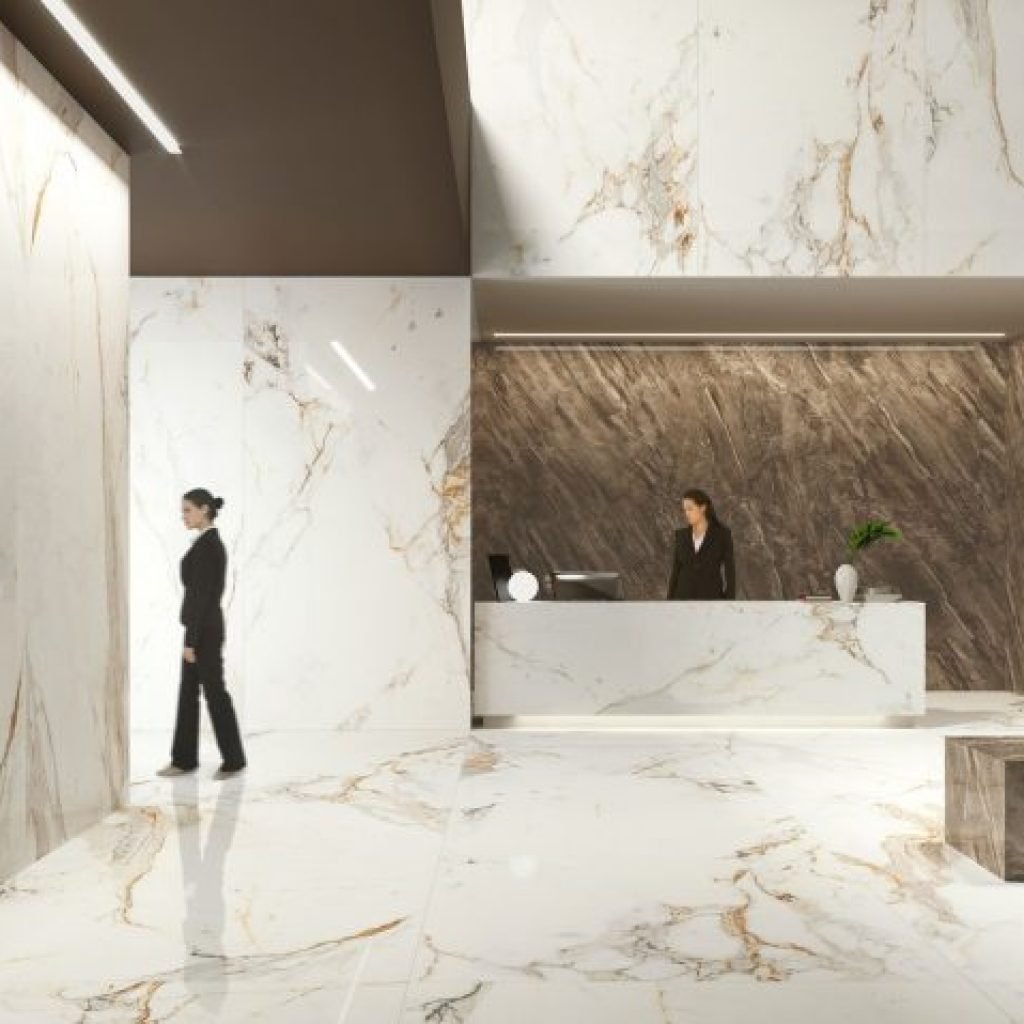
Marble forms as carbonate sedimentary rock, such as limestone, is metamorphosed under pressure to recrystallize into a harder stone. Depending on the chemical composition of the original sedimentary rock, and the conditions under which it metamorphoses, the marble can take a variety of appearances, though nearly always with distinctive wavy veins running through it. Marble can be categorized in a number of ways, and knowing the differences will help you make informed decisions.
Mineral Content
Although it is rarely highlighted by sellers of marble, different types of marble are sometimes categorized according to the amount of magnesium carbonate they contain:
Dolomite marble contains more than 40% magnesium carbonate.
Magnesium marble contains between 5% and 40% magnesium.
Calcite marble contains less than 5% magnesium carbonate.
Geographic Origin
The various types of commercial marble sold by retailers are usually named for the region from which they are quarried. Nearly every continent contains deposits of marble, but most of the commercial marble sold for residential building materials come from Italy, Spain, or other areas of southern Europe. The appearance of the marble usually gives clear clues as to its place of origin.

Carrara Marble
This classic white or light gray marble is one of the lightest marbles used for flooring tiles. It is typically white or very light gray, with soft gray veins running through it It is quarried in the city of Carrara in the northern tip of Tuscany, Italy. With hundreds of operating quarries producing it, Carrara marble is one of the most readily available marbles you can choose. By some accounts, more than 80% of all marble used in residential construction up to now is Carrara marble. Supplies of Carrara marble are dwindling, however, and you can expect other different sources of marble to come into heavier use in the coming years.

Calacatta Marble
A whitish marble with very pronounced veins ranging from gray to golden brown. Originating in the Apuan Mountains in Carrara, Italy, it is a high-end luxury stone that is used both in countertop slabs and flooring tiles. It is available in both honed and polished finishes. Calacatta is quite similar to Carrara marble, but with more prominent veining. This is a rarer and more expensive form of marble.

Statuario Marble
Also called Statuario, this marble is also quarried from the Carrara region of Italy, but it has a lighter field with less color variation that classic Carrara marble. The veins are usually a mixture of light and dark gray. Like Calacatta, this is a rarer and more expensive form of Italian marble.
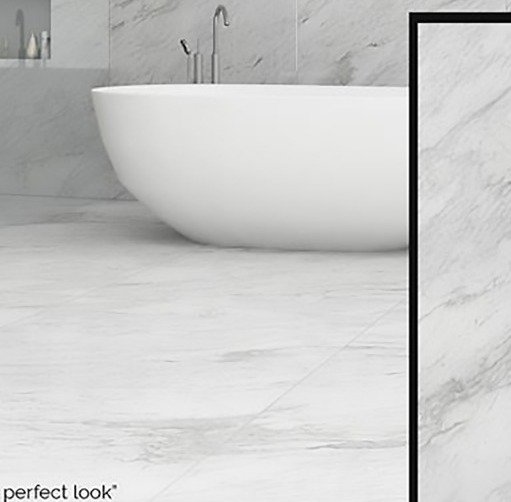
Breccia Onichita Marble
This is warmer, darker marble, with creamy browns and reds common. It is used both for countertops and floors. Breccia Onichita is sometimes considered a form of limestone, and it has a more complicated veining pattern than most marbles. The term “Breccia” refers to the rock’s composition, in which broken fragments are cemented together in a fine-grained mixture. This angular, broken pattern makes for a very attractive stone surface. The Breccia Onichita form of brecciate marble is quarried in Italy.
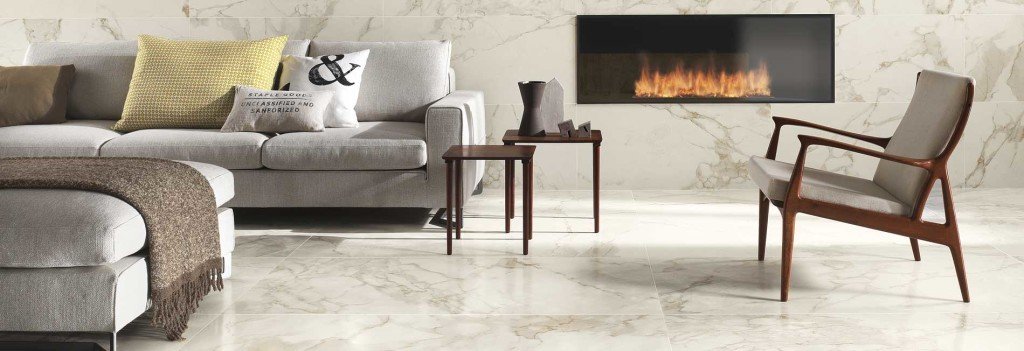
Arabescato Orobico Marble
This is a very dark marble with light gray to brown sweeping veins. It is a premium, high-end marble that comes from the Brembana Valley in Northern Italy.
Emperador Marble
This marble is quarried from three different regions of Spain and is available in various shades of brown, with fine grains and irregular veins. The darker color makes is a good choice for floor areas that receive high traffic; it is also commonly used for fireplace surrounds.
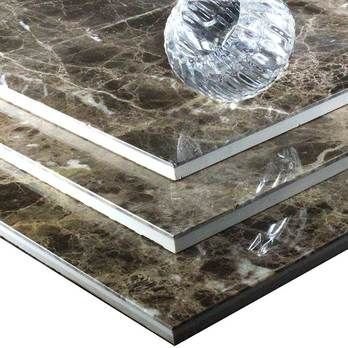
Crema Marfil Marble
This textured creamy beige stone has an overall yellow, cinnamon, or golden beige color with very soft veins of darker color. Like Breccia Onichita, it is sometimes marketed as a form of limestone. It is quarried in Spain.
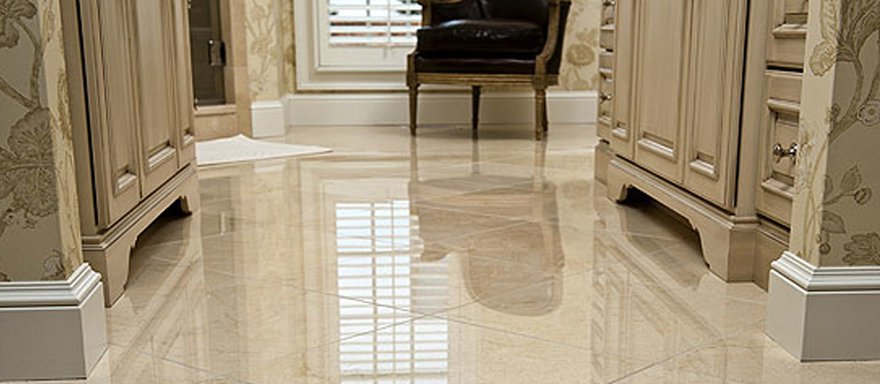
There are also unique and exotic marbles available from Turkey, Greece, and other regions. These often are quite expensive, but they can have truly unique colors, such as deep reds or greens.
Buying Tip
What is sold as “marble” in the big box home improvement centers is sometimes not genuine stone, but rather a “marble-look” porcelain tile. there is nothing wrong with these manmade ceramic products—they are much cheaper than genuine marble and can be remarkably effective at mimicking the look—but if you are set on using real marble for your flooring, read labels carefully. Shopping from a specialty flooring store will ensure that you are getting genuine marble.

Surface Finish
Any marble tile can be finished with any one of several different surface finishes. The most popular are polished, honed, tumbled, and brushed.
Polished Marble
One of the prized characteristics of a marble floor is its ability to take a very high polish. This allows the material to be buffed until it glistens in the light and is perfectly smooth to the touch. In lighter-colored marbles, polished tiles will actually glow, with the light of the room penetrating slightly into the stone and then reflecting outward with soft illumination.
There are several drawbacks to polished marble floors. First, they are very slippery, especially in wet environments. They also easy to damage—and will readily show that damage. These blemishes will be more visible in darker solid colored marble materials than they are in the light or single-colored tiles.
Honed Marble
In a honed surface, the marble is grinded down until it is flat and smooth, but not to the point where it is slippery and polished. These tiles allow you to have the beauty of marble with less concern about slipping hazards. Unfortunately, honed marble often does not have the same vibrancy of color as a highly polished stone. Often, the hues seem a little faded and washed out compared to the similar material in a polished finish. Honed marble also still has a relatively low coefficient of friction, and it can be scratched if not cared for properly.

Tumbled Marble
Tumbled marble is created by processing tiles in a drum with rock and sand aggregate that create small chips, scratches, and rounded edges on the tiles. The resulting tiles have a rustic, natural look that many people find attractive. The texture of tumbled marble is a good feature for shower floors since it reduces the slipperiness of the tiles.
With tumbled marble, each piece you get is slightly different. The tiles themselves are fairly standard in size, but the shapes will vary slightly, and not every piece will be a perfect right-angled square. You may also have some pieces that are polished and others that have a stripped honed surface. This irregularity is part of the appeal of using honed materials. However, when laying out an honed tile for a floor, make sure the overall variation of the tile shapes and coloring have an attractively random look.
Brushed Marble
Brushed marble is created scuffing the surface of the tile with abrasives until a natural, antique look is created. The brushing process, however, creates a somewhat porous surface that must be frequently sealed in order to resist staining. The floor needs to be cleaned frequently because dust tends to collect in the texture of the surface.
Tile Size and Shape
While marble flooring can be installed in large slabs, this is rarely done except informal, commercial settings. For residential use, marble flooring is almost always installed in the form of tiles. Classic marble floor tile is usually square in shape, with several dimensions most common:
12 x 12-inch tiles are most common; generally 3/8 inch thick.
16 x 16-inch tiles are also common; usually 7/16 inch thick.
24-x 24-inch tiles are usually the biggest available; typically 1/2 inch thick.
There are also rectangular marble tiles available in a variety of dimensions, such as 8 x 20-inches, 12 x 18-inches, and 12 x 24 inches. There are also geometric tiles, most commonly hexagons.
Mosaics
Add by MARBLE STONE EXPERTS and Export team of BHANDARI MARBLE GROUP INDIA RAJASTHAN KISHANGARH
These MARBLE tiles are scratch-resistant, stain-resistant, and durable. Well, on high-end houses marble flooring is generally considered better for entrance, hallways, and common ways. Granite is less common and probably more expensive. A combination of porcelain tile and marble is probably best for bathrooms.
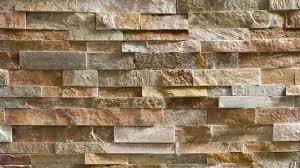
White Marble
White marble slabs are one of the best options for flooring material due to its beautiful and pure look. White marble is the most likely choice for homes as the white color adds elegance and creates serenity in the atmosphere.
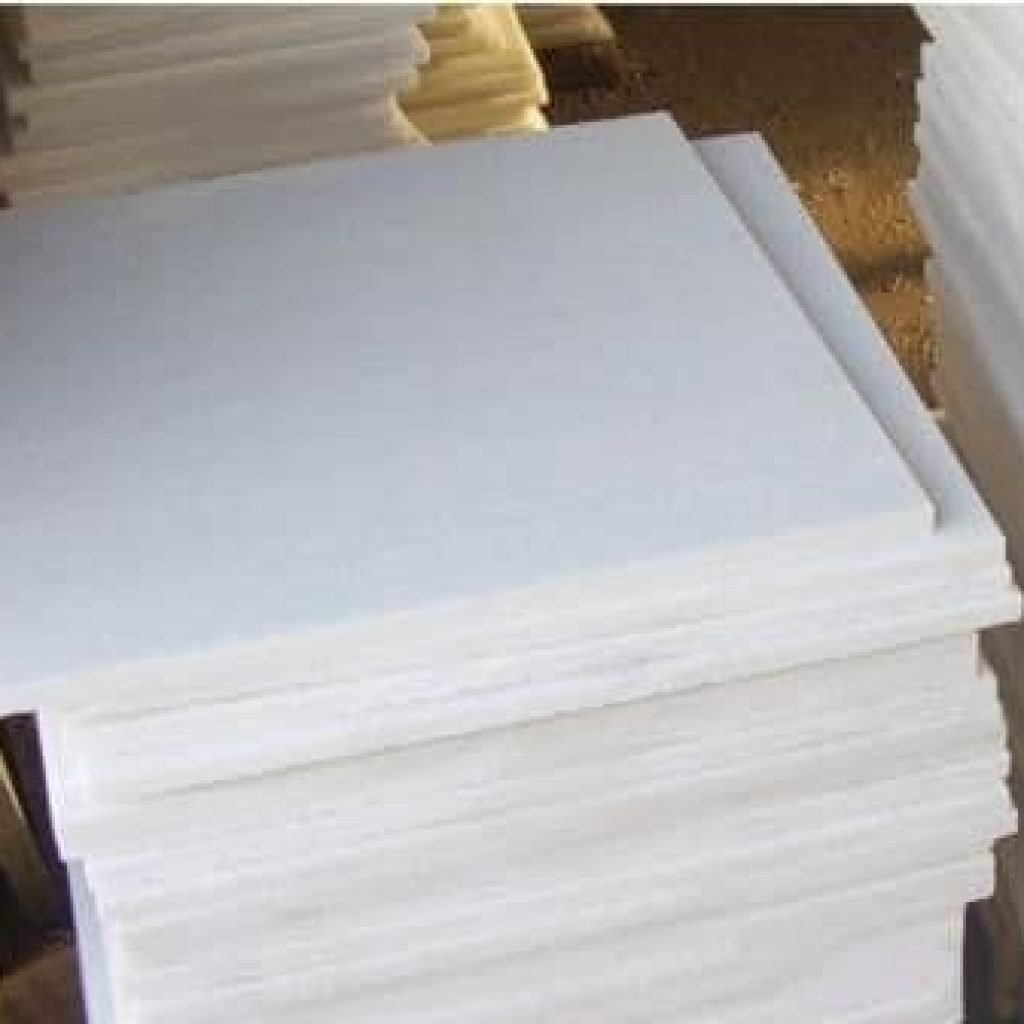
DESIGNERS AND ARCHITECTS ARE WELCOME
We personally invite designers and architects to find the exclusive quality of stone for all types of projects.
BHANDARI MARBLE GROUP has been a reliable partner for all your MARBLE GRANITE AND NATURAL STONE requirements since the year 1631. Decades of experience in the marble industry have made us what we are and we remain grateful to you for contributing to our success.
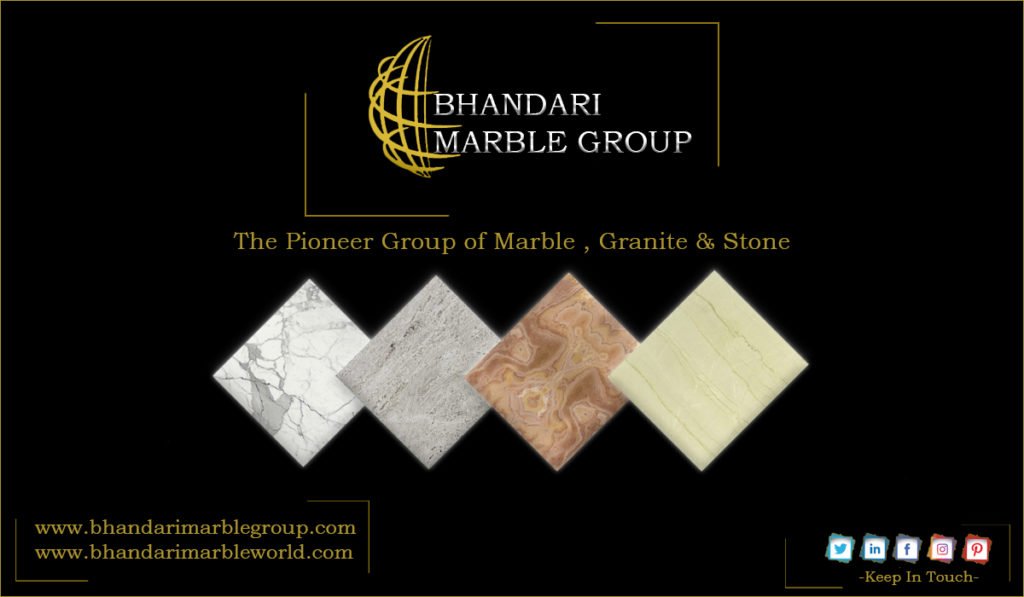
BHANDARI MARBLE GROUP has exclusive relationships with some of the world’s most renowned Architects, Interior designers, Builders, Developers from all around the globe.
From homes or villas to hotels, we cater to all types of requirements.
For more information, follow our Face book and Insta gram.
You can also contact us on:
BHANDARI MARBLE GROUP
Since 1631
+91-9672941111/9116341111
TO KNOW MORE, CALL US AT +91-9672941111/9116341111 or mail us at bhandarimarbleworld@gmail.com or bhandarimarblegroup@gmail.com.

